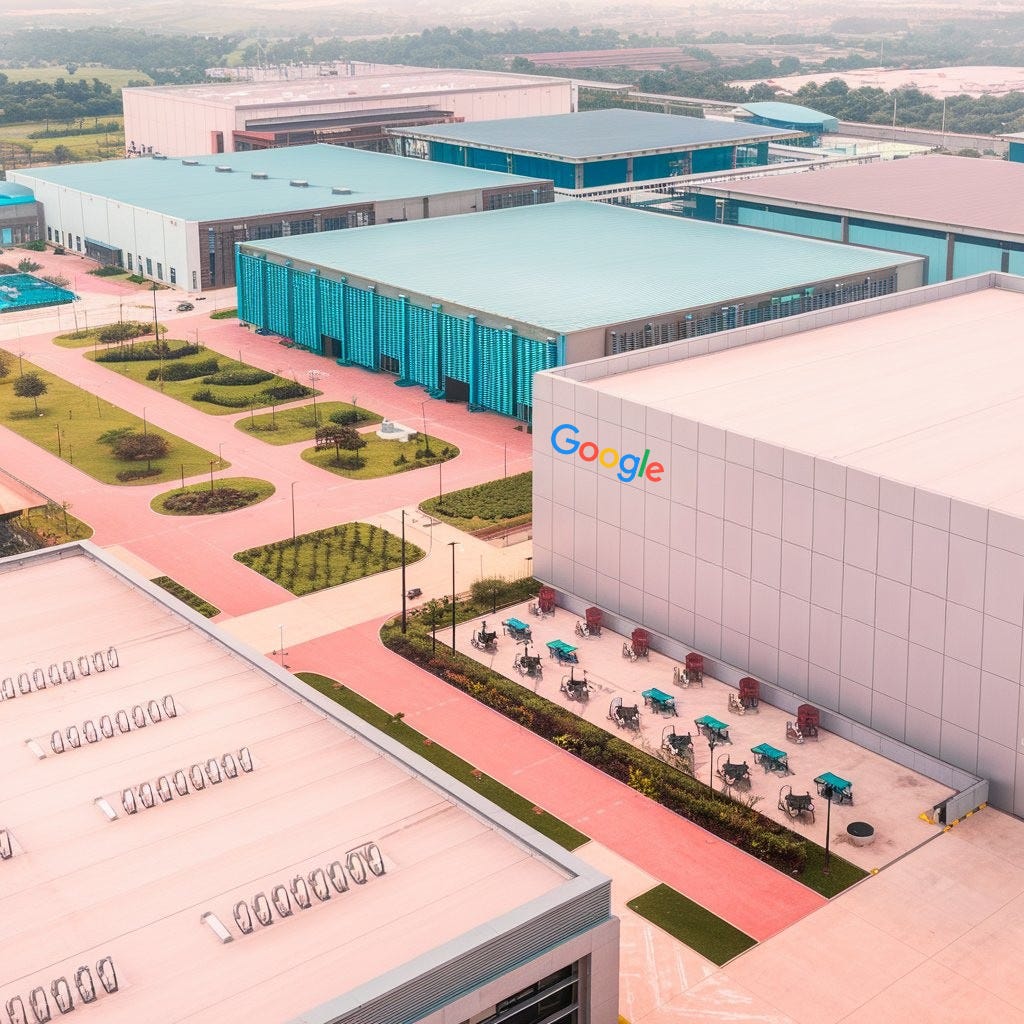What Does Google’s $85B Infrastructure Spend Reveal About the Future of AI Power?
Alphabet just hiked 2025 CapEx to a record $85B. Some call it visionary. Others fear it’s reckless. Here’s what’s really happening and what it means for investors, operators, and AI builders.
Welcome to Global Data Center Hub. Join 1800+ investors, operators, and innovators reading to stay ahead of the latest trends in the data center sector in developed and emerging markets globally.
The AI Infrastructure Race Is No Longer About Models. It’s About Moats.
When Alphabet quietly raised its CapEx guidance to $85 billion just months after already stunning markets with a $75B forecast it wasn’t just a number.
It was a signal.
A signal that we’re not in the hype cycle anymore. We’re in the arms race.
Google Cloud’s $106 billion backlog is one reason. The surge in demand for Blackwell GPUs and Ironwood TPUs is another. But the real story is strategic positioning:
Alphabet is building the rails that everyone else will need to ride.
Two-thirds of the spend is going to servers. Not facilities. Not R&D. Servers.
That’s Google’s declaration that the bottleneck isn’t data centers. It’s compute.
The Jevons Paradox of AI Compute
Here’s the irony: The more efficient inference gets, the more compute we use.
Google’s leadership knows this. So does Amazon’s Andy Jassy. That’s why CapEx isn’t falling despite performance gains.
Alphabet’s share of revenue going to CapEx will hit 21.5% in 2025. That’s nearly double the 10.5% from 2023.
You don’t do that unless you believe:
Compute will be the most valuable commodity of the AI age
Scale is a defensive moat
Whoever controls infrastructure can dominate the stack
What’s at Stake
This level of spend comes with major implications:
Investors: Free cash flow dropped 61% in Q2 2025. ROIC pressure is building.
Operators: Lead times for Blackwell GPUs now stretch over 12 months.
Policymakers: Google has signed nuclear SMR power deals. But power constraints remain the wild card.
Startups: Building from scratch is now prohibitively expensive. Most will become tenants, not landlords.
Why It Might Work Anyway
Alphabet is vertically integrated in a way rivals aren’t:
It owns the TPU stack
It controls consumer distribution (Search, YouTube, Android)
It can cross-subsidize across ads, cloud, and devices
OpenAI despite its Microsoft alignment is using Google Cloud as overflow compute
That’s not just a hedge. It’s insurance.
That same hedging strategy underpinned OpenAI’s $4B partnership with CoreWeave, aimed at securing dedicated GPU clusters outside the Microsoft ecosystem.
Or... Is This the Peak?
The question remains:
Can Alphabet monetize fast enough to justify the depreciation curve?
If not, expect a replay of the CapEx panic of February 2024 when the stock briefly dipped on fears of spending runaways.
But if they’re right?
Then we’re watching the next Amazon Web Services moment.
And the price of missing it will be steep.
Bottom Line
Alphabet’s $85B CapEx isn’t just about building data centers. It’s about building the 21st-century equivalent of railroads.
Control the infrastructure, control the future.
But if the ROI doesn't show up in time?
That infrastructure could turn into a very expensive moat with no castle.
In this new cycle, the winners won’t just be those who spend but those who de-risk. (How Technology Risk Is Reshaping Global Data Center Investing)

